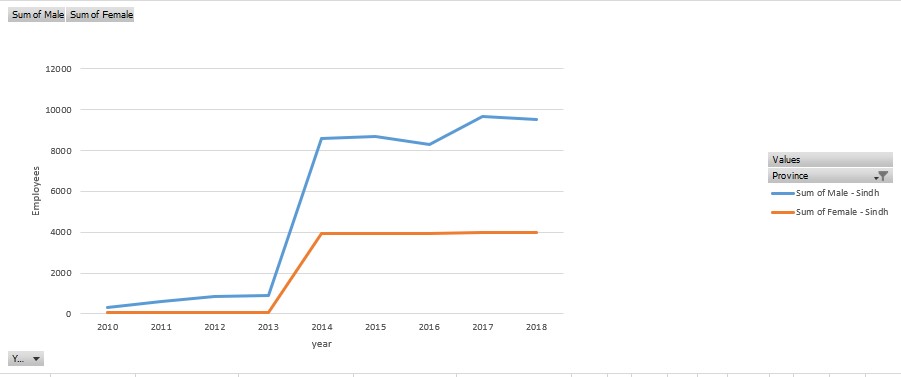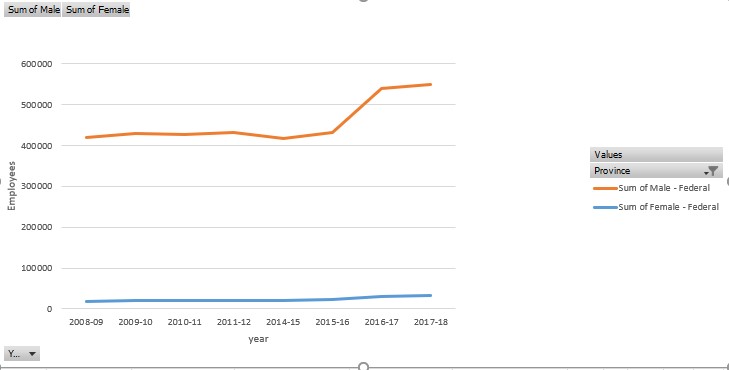Bureaucrats Employed by Grade & Gender
February 24, 2020Gender discrimination is a bitter truth of the country we live in. Women are deprived of equal opportunities throughout the social and economic sectors of Pakistan. It is sad to note that Pakistan is reported the second lowest in the overall measure of gender biases in World Economic Forum’s Global Gender Gap Report of 2013. Pakistan’s bureaucracy is also tainted with this dark reality. The purpose of this study is to analyze how our bureaucratic system has evolved over the years and to what extent the gender discrimination issue has been resolved.
The Employment Statistics of Bureaucrats looks at the size of the bureaucracies of the Federal Government, the 4 provinces and Gilgit Baltistan. This database was compiled for the years 2010-2018. The aim of our analysis is to see if the number of female bureaucrats increased over the years, and what share of each grade they constitute.
What was immediately apparent was that the sizes of the provincial bureaucracies were subject to sudden changes over the time period. For example the number of provincial bureaucrats in Sindh dramatically increased after 2013 while the number of provincial bureaucrats in KPK decreased substantially after 2013. Attached below are the number of bureaucrats in KPK over the years, this graph shows just how remarkable the fall in the number was.

These sudden declines and rises make it difficult to make meaningful comparisons over the years. The reasons for these changes might be errors in data collection or the recategorization of various employees and attaching them to bureaucratic grades. For example, government employees not directly in the provincial administration might have been reclassified as being in the administration, or previous direct employees of the provincial government might have been transferred into other departments. We did not find any evidence of mass hiring or laying off of government employees on the scale that the graphs suggest. Attached below is the graph for the number of bureaucrats in Sindh, notice again the steep rise after 2013.

Over the federal and Punjab governments, meaningful comparisons can be made due to the absence of any jumps. In both cases, men vastly outnumber women in terms of total number, and the difference has only increased in recent years. This implies that equal opportunities are not available in the bureaucracies of both the federal government as that of the largest province, and that no real action is being taken to address this problem. This issue persists in terms of grades as well, women are vastly underrepresented in all grades compared to men at the federal level. The diagram below highlights the wide discrimination gap between male and female bureaucrats which has been consistent over the years.

In terms of comparison between provinces, Sindh appears to be doing the best in terms of female bureaucrats to male bureaucrats, while Balochistan seems to be doing the worst, with negligible numbers of women in the provincial administration. Overall a lot more can be done with regards to increasing female representation in the bureaucracies, both at the Federal and the Provincial levels.
This blog post is written by Syed Ghalib Qadri , student from the batch of 2020 at Lahore University of Management Sciences.